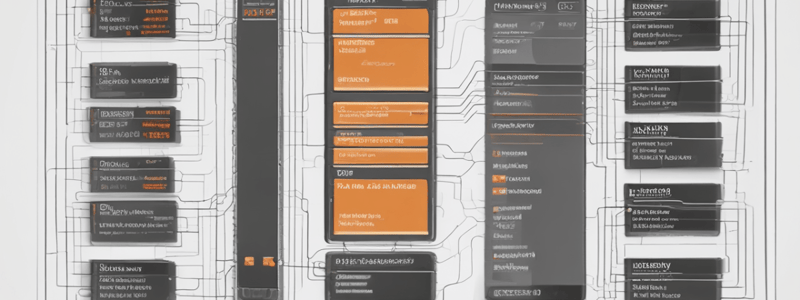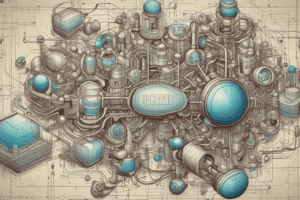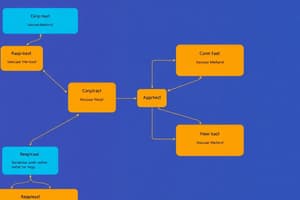Podcast
Questions and Answers
What is the primary purpose of a system sequence diagram?
What is the primary purpose of a system sequence diagram?
- To show the progression of events over a certain amount of time
- To present sequences for specific use cases (correct)
- To visualize the entire system architecture
- To represent a user's interaction with the system
What is the relationship between SSDs and the Use-Case Model?
What is the relationship between SSDs and the Use-Case Model?
- SSDs are a separate modeling technique from the Use-Case Model
- SSDs are a replacement for the Use-Case Model
- The Use-Case Model is a part of SSDs
- SSDs are a part of the Use-Case Model (correct)
What do use case diagrams primarily represent?
What do use case diagrams primarily represent?
- A user's interaction with the system (correct)
- The system architecture
- The progression of events over time
- The interactions between system components
What is the main difference between standard sequence diagrams and system sequence diagrams?
What is the main difference between standard sequence diagrams and system sequence diagrams?
What is a common purpose of both system sequence diagrams and use case diagrams?
What is a common purpose of both system sequence diagrams and use case diagrams?
Flashcards are hidden until you start studying
Study Notes
Sequence Diagrams vs Use Case Diagrams
- Standard sequence diagrams display the progression of events over a certain amount of time.
- System sequence diagrams (SSDs) show sequences for specific use cases, providing more detail than standard sequence diagrams.
- Use case diagrams are a type of diagram that represents a user's interaction with the system.
System Sequence Diagrams (SSDs) and Use Case Model
- SSDs are a part of the Use-Case Model, which is a visualization of interactions implied in the use cases.
- The Use-Case Model provides a comprehensive view of the interactions between users and the system.
Studying That Suits You
Use AI to generate personalized quizzes and flashcards to suit your learning preferences.




